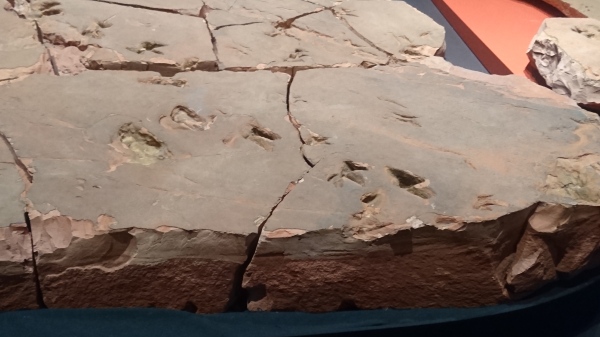
I’ve been neglecting my blog this year, but I just had to put up my annual Christmas post. This is the last shopping week before Christmas, and I hope that this post gives you some ideas about what the buy the geologist in your life. There are some good ideas for stocking stuffers below, as well as for some more expensive gifts.
I should be back to more regular blogging next year, now that my part-time M.Sc. in Carbon Management is finished.
If you want to look at previous years lists, here they are:
Gift #1: Steel-capped Boots

Geologists often need a good, comfortable pair of steel-capped boots for field work, particularly if they are working at a core logging shed or a mine site. These boots can be expensive, so they would make a great gift. Personally, I have a pair of the boots above, which I can highly recommend. I really like the bright pink color and the side zip. The above boots also come in blue and purple. Of course, if you want to be boring you can stick with normal brown boots. Getting the fit for boots can be a bit tricky, so it might be best to gift a voucher to a shop selling boots, so that the geologist in your life can try the boots on before purchase.
Cost: Variable, about $150 for a good pair of boots
Gift #2: Kenometer

A kenometer is a handy tool for measuring structural data (alpha and beta angles) in drill core. If you want to know how a kenometer works, here’s a great video. Many work places, such as mine sites, provide kenometers, but possibly the academic geologist in your life doesn’t have one — and it might be a really useful tool for them if they do any work with drill core.
Cost: About $400-$500
Gift #3: Spot Tracker

Geologists often work in remote areas with no mobile signal. A spot tracker is a great safety device that lets the geologist in your family message you to let you know that they are safe – and also send out a distress signal if anything happens in the field. These days spot trackers are affordable and would make a great gift for your loved one. For example, here’s the SpotX two way satellite messenger.
Cost: $200-$300, plus the cost of the satellite subscription plan
Gift #4: Snake Bite Kit

Another great safety gift for the field-going geologist in your life is a snake bite kit. This simple little kit can save your life in the field. Every geologist should have one of these in their pack when doing field work. Regular first aid kits often don’t have snake bite bandages, so this is a great gift even if your loved one already has a first aid kit.
Cost: $20-$30
Gift #5: Insect Net

Geologists are often pestered by insects, such as mosquitoes and flies, when working in the field. A head net can provide good protection from pesky insect bites and also insects getting into your eyes and mouth. These nets need to be replaced regularly since they are prone to tearing. So, a new net will definitely make a great gift for the geologist in your life.
Cost: $10-$15
Gift #6: Magnet

Magnets are really useful for geologists, since some minerals, such as magnetite, can be identified by their magnetic properties. A pocket pivot magnet makes an excellent gift for a geologist.
Cost: About $10
Gift #7: Trilobite Slippers

Yes, you read that correctly. Trilobite slippers! These are so awesome I don’t even have words to describe them. Just buy them!
Cost: $24 from the Paleontological Research Institution here. The institution has lots of other great items in the gift shop, so be sure to check it out!
Gift #8: Moon Puzzle

Puzzles are always fun to put together over the holidays, and the geologist in your life would probably enjoy a moon puzzle, or perhaps a Mars puzzle. Just be prepared to hear about lunar anorthosite!
Cost: About $30
Gift #9: Beneath the Waves Tote Bag

The marine geologist in your life will absolutely love this fantastic tote bag, which you can buy from the Woods Hole Oceanographic Institution gift shop to support ocean research. What a great way to support important science and remember the different zones of the ocean.
Cost: $29.95
Gift #10: Dinosaur Snow Globe

I mean, I feel like this one doesn’t even need an explanation. It’s the perfect Christmas gift for a geologist! There are quite a few different ones for sale, but I particularly like this one where Santa is riding a T-Rex.
Cost: Variable, about $10 to $50
That’s it for this year’s gift guide. I hope it gave you some good gift ideas! Stay tuned for some more regular blogging in the New Year. I have a few Georneys to share.




























































